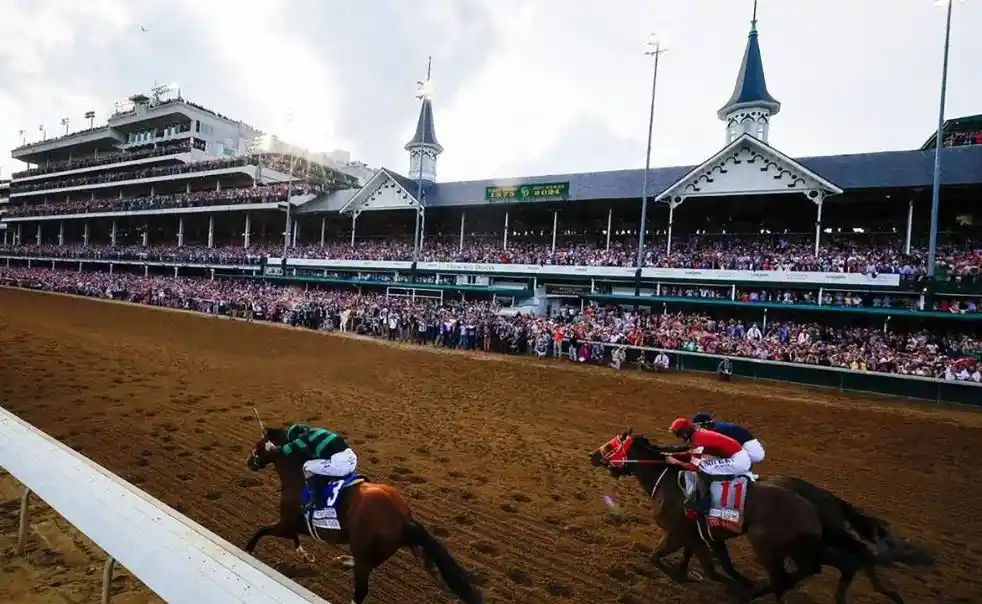Safer Horse Racing Conditions After Fatality Decline

Elle
May 2nd 2025
Likes
Share:
After a tough year in the horse racing conditions world, Churchill Downs is moving ahead with a more rigorous approach to data- and technology-driven safety. The global horse racing conditions venue for the Kentucky Derby saw progress into 2024 after a wave of concern that hit the industry in 2023.
The report revealed that fatalities, as defined by HISA and applying to 47 tracks controlled entirely across the United States, decreased from an overall rate of 1.23 deaths per 1,000 starts in 2023 to 0.9 in 2024. This information was included in an annual report by HISA, recently published in March. Churchill Downs, in particular, reported six horse deaths over the course of the year, showing improvement from the previous year, when seven horses had already died before Derby Day.
The incidents in 2023 prompted significant changes at Churchill Downs. Horse racing conditions were suspended temporarily as officials reassessed the facility’s horse racing conditions. Since then, the racetrack has taken a different direction, applying a more structured and technical approach to its operations because of the fatality accident. Track surfaces now undergo more frequent testing, and adjustments are made based on consistent review of horse racing conditions.
A notable addition to the track’s safety strategy is the use of stride sensors worn by horses. These devices collect performance data that may signal potential health concerns. Detect little changes that may lead to more major injuries in the future. For 2025, Churchill Downs will put into place PET scans to help more in their veterinary studies. The scans are designed to uncover issues that may not normally show up on a straightforward physical examination or X-rays.
To minimize a horse race’s risk of injury and fatality, PET scans would be integrated into the veterinary evaluations of horses starting in 2025 at Churchill Downs. Early changes in bone or tissue may be fatal if ignored, and this technology is capable of detecting those changes. The early identification of problems that physical exams or X-rays may miss will aim to prevent those breakdowns that may result in fatality during training or racing.
“Our big thing this year is focusing on the science and technology side,” said a Churchill Downs spokesperson. “We believe these tools can help identify subtle injuries before they become catastrophic.”
Industry professionals point to technology as a possible turning point for equine safety. Still, the effectiveness of such systems depends on how widely they are adopted and how consistently they are applied. One of the recurring challenges is the transient nature of racehorses, which often move between tracks in different states. This movement makes it harder to maintain consistent health records or standard procedures.
Without a unified national system for tracking a horse’s health and horse racing conditions history, there are gaps in oversight. While HISA continues to introduce new guidelines, the responsibility still falls on individual tracks, owners, and trainers to report accurately and follow procedures.
The discussion around safety often brings up the need for better collaboration across jurisdictions. At the same time, many involved in the sport believe that data-backed decisions are more effective than relying solely on tradition or routine.
Since HISA was launched, its rules have included more frequent veterinary checks, stronger post-race monitoring, and clearer reporting protocols. These updates aim to raise the overall level of care across tracks, but some experts believe more must be done to hold all stakeholders accountable.
“There’s no one-size-fits-all fix,” said an industry consultant. “But if each track applies what works and commits to real transparency, there’s a path to fewer incidents.”
At Churchill Downs, the approach has shifted from reactive to preventative. Officials are making changes not only in surface management but also in how horses are prepared and reviewed before races. While the number of fatalities in 2024 is still not zero, the drop from the previous year signals that some of the steps being taken may be effective.
With 2025 approaching, more attention will turn to whether this progress holds. Churchill Downs will again take the spotlight during the Kentucky Derby season, and along with the competition, the safety of the sport will remain a focus.
As other tracks watch the results, Churchill Downs’ recent efforts may offer a model for what can be done through consistent investment in research, improved diagnostics, and a stronger commitment to horse welfare.
